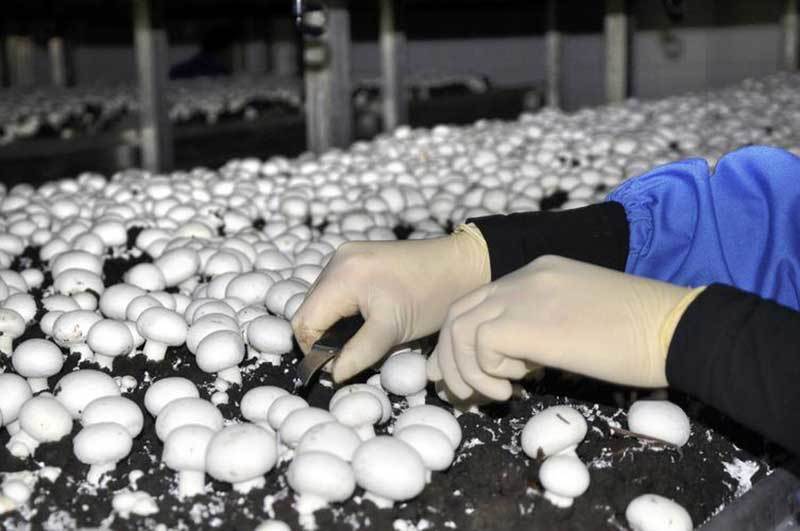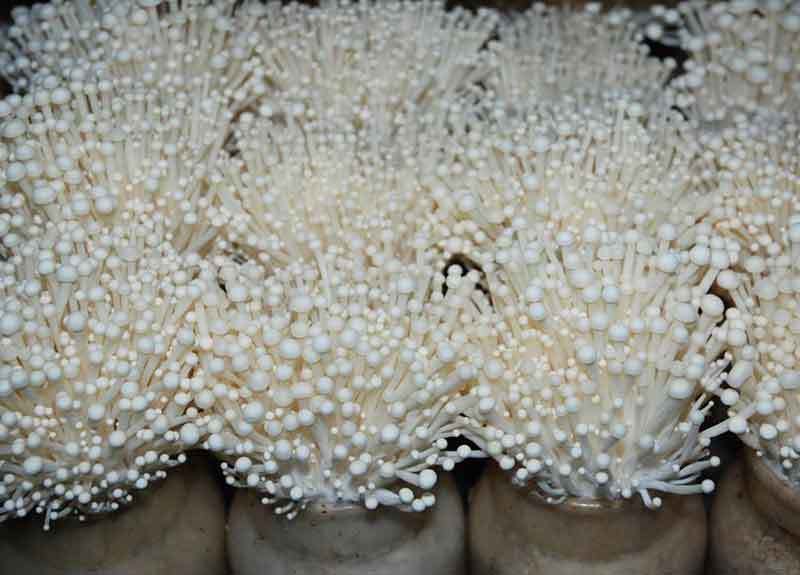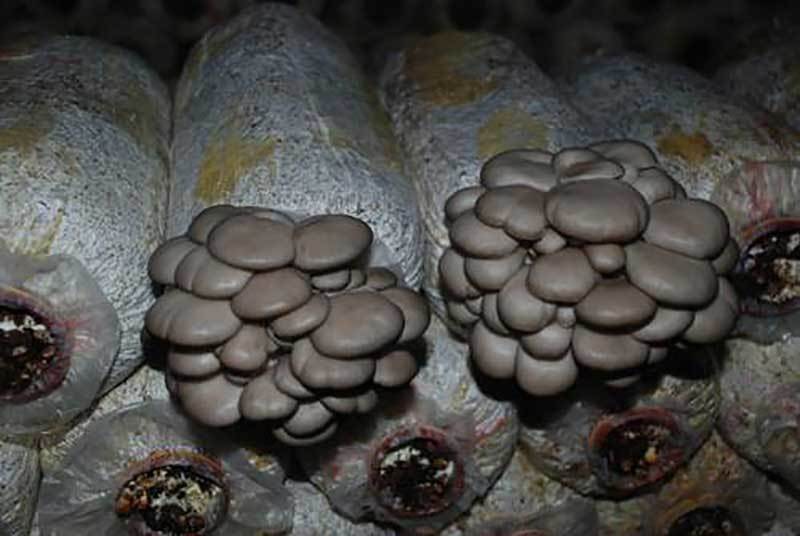The Ultimate Guide to Growing Mushrooms in Basement
Introduction
Growing mushrooms in the basement is becoming increasingly popular. It is a great way to supplement your grocery store-bought mushrooms. Growing mushrooms at home also has additional health advantages. This increases control over pesticide and fertilizer use. It's also an incredibly rewarding hobby with the potential for delicious culinary experimentation.
This guide will provide you with information for growing mushrooms in your basement. We will discuss some topics. For example, mushroom varieties suitable for basements, materials for successful growth, and strategies for maintenance and harvesting. Ultimately, we aim to equip you with the knowledge needed to achieve a bountiful harvest from your own basement.
Selecting The Right Mushroom Species
Understanding mushroom basics is key to successful basement cultivation. You can cultivate several types of mushrooms in a basement environment. Each requiring its own particular set of conditions and levels of skillfulness. You should understand the differences between these types. So you choose the right type for your needs.
When growing mushrooms in basement, there are two main categories—button (Agaricus bisporus) and specialty (shiitake, enoki, maitake). Button mushrooms have a mild flavor and texture that make them popular as an ingredient for soups or salads. Specialty mushrooms offer a range of unique flavors and textures depending on the species selected.
Button mushrooms are the easiest to cultivate, so they’re often a great choice for beginner basement cultivators. With the humidity and temperature of around 10-13°C, you can grow button mushrooms in four to six weeks. The key is to provide consistent conditions throughout your growing environment.
Specialty mushrooms have more specific requirements when cultivation, making them a better option for experienced growers. Different species require different temperatures and humidity levels, with some needing significantly lower temps than others.
Specialty mushrooms also take much longer to cultivate than button varieties. It can take two months or more for specialty mushrooms to mature fully, depending on the species selected.

Preparing the Right Tools and Materials
Choosing the right area: You should consider things like accessibility and insulation when choosing an area to grow mushrooms in basement. It should be easy to access, ideally located near water sources and a power outlet. Make sure the space is well insulated from both heat and cold temperatures. This helps maintain a controlled environment conducive to mushroom growth.
Cleaning and disinfecting the space: You should give it a thorough cleaning and disinfection when you've chosen an appropriate space for your mushroom growing project. This can include scrubbing down all surfaces with soap or bleach solutions. Replace old insulation if needed. Seal up any cracks or crevices to limit the presence of pests.
Creating a controlled environment: Creating a controlled environment for mushrooms that grow in basements is essential. You can build a mushroom growing chamber, install proper ventilation and lighting. Maintain optimal temperature and humidity levels.
1. Building a mushroom growing chamber: Build a dedicated grow room or “mushroom chamber” in your basement. The materials should be non-toxic. For example, plastic sheeting and wood boards. The walls should also be insulated with foam board insulation to maintain consistent temperatures.
2. Installing proper ventilation and lighting: In order for mushrooms to grow properly, they need access to fresh air and light. To provide this, you should ensure your mushroom chamber is equipped with ventilation holes near the top of the walls. Or a fan system installed in the ceiling that can be used to circulate air throughout the space. Additionally, installing UV lighting fixtures will help give your mushrooms ample amounts of light without generating too much heat.
3. Maintaining optimal temperature and humidity: It's important to maintain proper temperature and humidity levels within your mushroom growing chamber. You should equip the room with a digital thermometer/hygrometer that can monitor these levels. Keep the temperature 68°F-73°F. The relative humidity is about 95%. You can also install a dehumidifier in the space to help control excess moisture.
Preparing the Growing Substrate
When growing mushrooms in your basement, the most important step is preparing the substrate. This is where you’ll be growing the mushrooms, so it's essential that you create an ideal environment for successful cultivation.
Different substrate options for mushrooms: There are different substrates suitable for basement mushrooms. The most common options include sawdust, straw, wood chips and composted manure. You should consider which one will work best for your particular mushroom species.
Selecting the best substrate for your mushroom species: The substrate will depend on the type of mushroom. Different mushroom species thrive in different environments. So you should understand the needs of your chosen species before selecting a substrate. For example, sawdust is great for most types of mushrooms, but wood chips are best for oyster mushrooms.
Preparing and sterilizing the substrate: Once you’ve selected the right substrate for your mushrooms in basement, it's time to prepare it for inoculation with mushroom spawn. You should clean and sterilize the substrate. This helps get rid of any bacteria or fungi. Use boiling water or a chemical solution to sanitize the substrate.
Inoculating the substrate with mushroom spawn: It’s time to inoculate your substrate with mushroom spawn. You can mix the spawn into the prepared and sterilized substrate. Create an environment that will encourage successful growth of your chosen mushroom species. Once you’ve mixed in the spawn, simply spread it across a clean plastic tray or bag. Seal tightly to keep out contaminants until you’re ready to transfer it to your growing environment.

Maintaining Optimal Growing Conditions
Watering & humidity management: Mushrooms growing in basement require a high humidity environment to thrive. So keep your area well-watered. Basements are very humid environments. But you should still mist the air every day or two to ensure that the moisture levels stay consistent.
You can use a dehumidifier if your basement has particularly high humidity levels. When watering, avoid direct contact with the mushrooms. This can cause them to rot or become diseased. Instead, use a spray bottle or automated irrigation system.
Controlling temperature fluctuations: Most mushroom varieties prefer temperatures between 55-75°F (13-24°C). So make sure mushrooms growing in basement are kept within this range. Consider installing a temperature control system if your space gets too warm or too cold.
Managing lighting requirements: Different species of mushrooms require different levels of light for optimal growth and development. Some may not need any additional lighting at all. Before setting up a grow area in the basement, research the type of mushroom you intend to cultivate and what kind of lighting it needs. This will help ensure that you create an environment conducive to successful cultivation.
Fungal disease prevention & treatment: Because basements are often dark and humid spaces, they can be prone to fungal diseases. To prevent contamination in your grow area, keep the humidity levels and temperature consistent as mentioned above.
It's also important to use clean tools when handling mushrooms and surfaces. You should discard the affected crop to avoid spreading the infection further if you do notice signs of fungal disease. For example, discoloration or abnormal growth.
How to Grow Mushrooms in Your Basement?
Understanding the mushroom life cycle: They are the fruiting bodies of mycelium. It is a network of microscopic thread-like fungal filaments. They grow on decaying organic matter like wood or soil. The mycelium absorbs nutrients from its environment and produces these visible mushrooms once conditions are favorable for growth.
Step-by-step instructions: You can plant mushrooms in the basement when you have a basic understanding of these fungi. You will need spawn (fungal material) and either sawdust or straw for planting medium. You can purchase them online. You’ll also need a few other items, such as gloves, masks and plastic pots.
Begin by sterilizing the planting medium in boiling water for about an hour. Then, let it cool off before mixing it with the spawn using your hands or a spoon. After that, place the mixture into containers or bags. Poke holes in them so air can circulate.
Keep your mushroom containers at room temperature (around 70-75°F). Mist them with water once or twice daily. The mycelium should begin to colonize within two weeks until you see white webs of thread-like filaments. Once this happens, it’s time to fruit the mushrooms.
Caring for mushrooms growing in basement: Place the mushroom containers in a room with indirect sunlight and mist them again twice daily. You should begin to see mushroom heads emerge within days or weeks depending on the species you are growing. When they reach your desired size, harvest them by cutting off the heads with a sterile knife or scissors.
Harvesting and Utilizing Your Mushrooms
Best harvest times for different mushrooms: When harvesting mushrooms growing in my basement, timing is everything. Different mushrooms require different amounts of time. You should harvest them without compromising their taste or texture.
For example, cultivated white button mushrooms take 4-6 weeks before they are ready for harvest. While shiitake mushrooms need 3-4 months. You should research the specific mushroom varieties that you’re growing. You will know when it is best to harvest them.
Proper harvesting techniques: You can gently twist and pull the mushrooms from the substrate as opposed to cutting or uprooting them. So the remaining mycelium won't be damaged in any way. Carefully wash and clean each one before they are consumed.
Storing and preserving mushrooms: Mushrooms can go bad quickly after harvest. Unless you are properly stored and preserved. The most common method of storing mushrooms is drying them out. You can use a food dehydrator or an oven set on low heat overnight. You can store fresh mushrooms in the refrigerator for 5 days.

Troubleshooting Common Issues
Identifying and treating common mushroom diseases: Some common diseases include brown spot disease, gray mold, stem rot and powdery mildew. It’s important to properly identify these diseases. So you can take the necessary steps to treat them.
Brown spot disease is caused by a fungus that will cause dark spots on the surface of your mushrooms. Treating this requires removing any affected parts of the mushroom and applying a fungicide.
Gray mold, or botrytis, is another common disease, which will cause your mushrooms to rot and turn gray. Treating this requires pruning away any affected parts of the mushroom and applying an antifungal compound.
Stem rot is also caused by a fungus that will cause the base of your mushroom to become soft and mushy. Treatment for this can include cutting off any affected areas of the mushroom and using an antifungal solution.
Finally, powdery mildew causes a white powder-like substance on your mushrooms. You can remove any infected parts of the mushroom. Spray with copper sulfate solution every few days until it clears up.
Dealing with pests and insects: Garden pests can all wreak havoc on your mushroom crop. For example, slugs, snails and aphids. Make sure the area where you’re growing mushrooms is kept clean to avoid attracting these creatures. If you do find any pests in the area, it’s best to take steps to remove them right away. This can include using traps or insecticides.
Addressing nutrient deficiencies: The soil can be detrimental to mushroom growth if it lacks essential nutrients. Common nutrient deficiencies include potassium, magnesium and iron. To address such deficiencies, you should fertilizer your soil properly and be supplemented with the necessary nutrients.
Handling environmental challenges: Growing mushrooms in a basement can also be affected by environmental challenges. For example, temperature fluctuations or lack of air circulation. You should maintain an even temperature for your mushrooms. Any sudden changes in temperature can be harmful to the crop. Additionally, ensure proper air circulation within your mushroom growing area. You can use fans or open windows and doors to allow fresh air to flow through.
Conclusion
Basement mushroom growing can take advantage of the space in your home. It also creates a unique and rewarding culinary experience. Growing mushrooms in basements allows for greater control over the environment. This makes it easier to customize the conditions that are most beneficial to each species.
Grow mushrooms in basement is quite simple for beginners. You can find plenty of resources online. It’s important to keep things clean and organized if you are starting a homegrown mushroom operation. Additionally, research on the specific species of mushrooms growing in basement.
You can connect with nature and provide your family with delicious food at the same time. With some patience and dedication, anyone can start their own basement mushroom farm.



